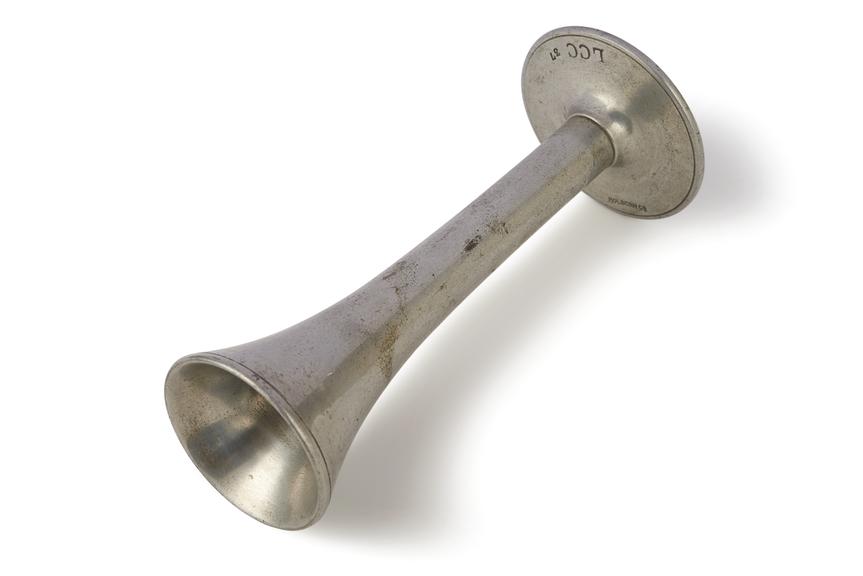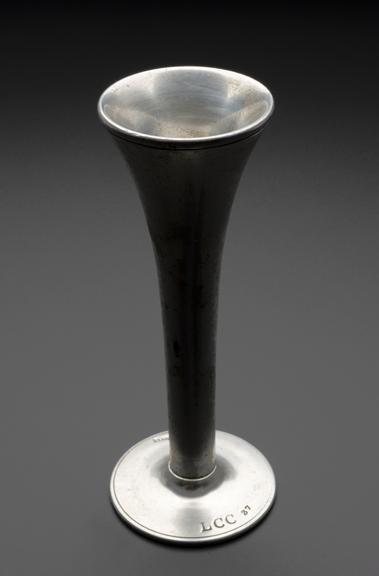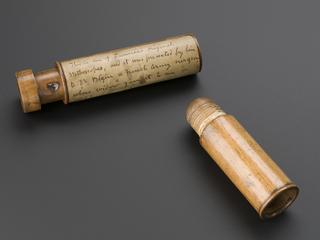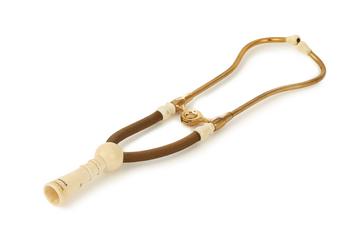






Pinard's foetal monaural stethoscope, made by Holborn Co., English, 1870-1920
Leading French obstetrician Adolphe Pinard (1844-1934) designed this monaural stethoscope. It was used to listen to the foetus within the womb. Pinard was an innovator in maternal health. He developed techniques for monitoring the health of mother and child before and during birth. The stethoscope was made by Holborn and Company in London.
Listening to the internal sounds of the body is known as ‘auscultation’. Auscultation of the foetal heart beat was first described by F. I. Mayor of Geneva in 1818. During the 20th century, foetal heart monitoring became a routine method of checking the condition of the baby before and during birth.
Details
- Category:
- Clinical Diagnosis
- Collection:
- Sir Henry Wellcome's Museum Collection
- Object Number:
- A625117
- Materials:
- metal
- Measurements:
-
overall: 47 mm 58 mm, .13kg
- type:
- stethoscope
- credit:
- Hartston, W. and London County Council




